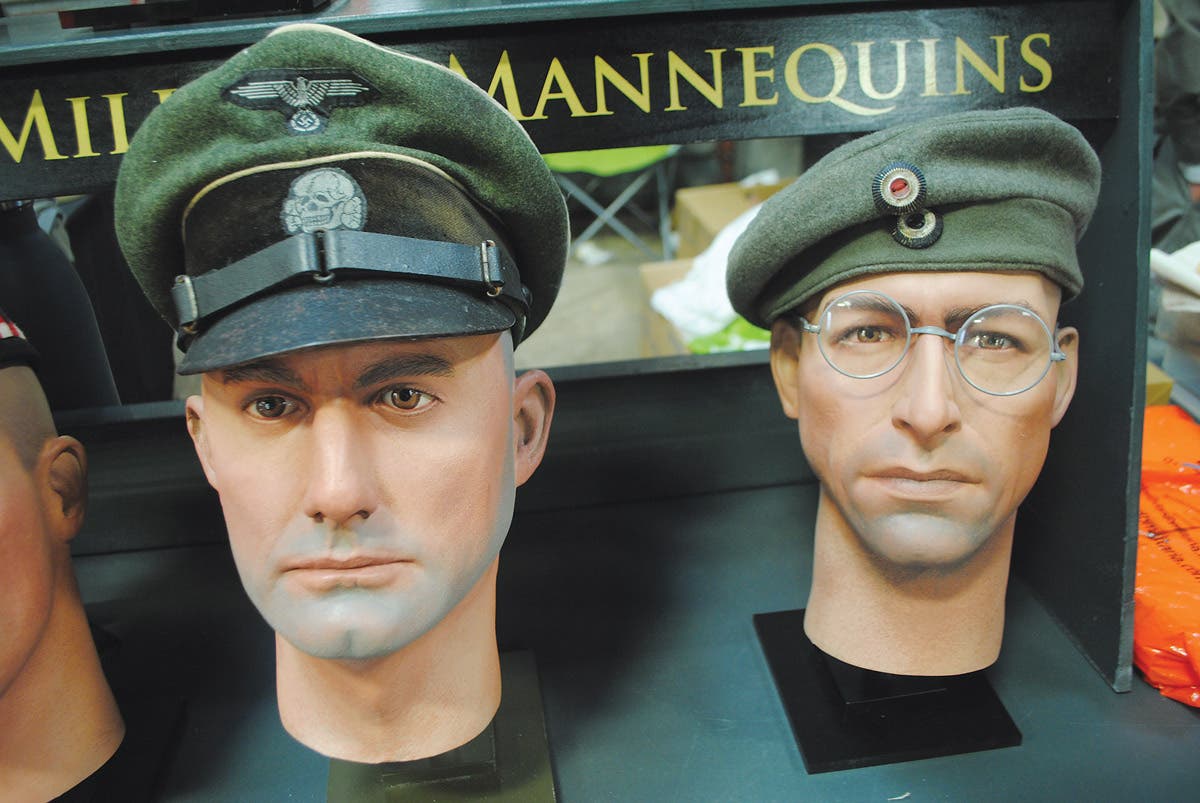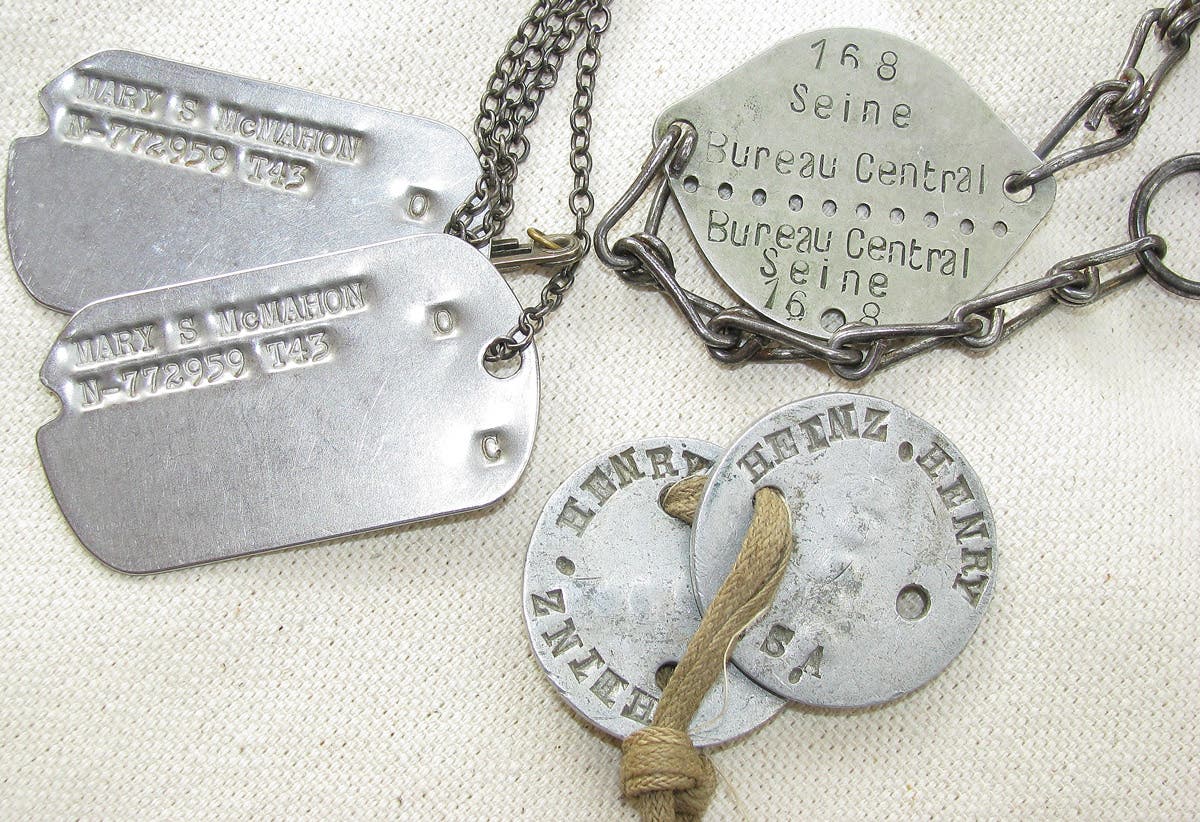Why do we collect the Third Reich?
Only through the determination, cooperation and sacrifices of countries across the globe was the Nazi regime stopped. That, in a nutshell, summarizes what the majority of serious collectors of Third Reich materials believe, despite some outsiders’ correlation between “Nazi” collectors and modern hate groups.
One of the most significant periods of history in the last 100 years encompassed the world-altering events leading up to, and culminating in the destruction caused during World War II. Conflicts intensified as innocent countries were attacked, and in Europe, a self-serving, power-hungry, man-of-his-time politician led the “Nationalsozialistische Deutsche Arbeiterpartei” (National Socialist German Workers’ Party - NSDAP – Nazi Party) towards his ultimate goal of world domination. Through ongoing campaigns of highly sophisticated propaganda that established an elitist, homogenous, “country inside of a military camp”, millions of Germans followed this man and the organization he created. They did so by joining a plethora of military, paramilitary, clubs, guilds, work unions and other associations designed to enhance Adolf Hitler’s control over his people. Only through the determination, cooperation and sacrifices of countries across the globe was he stopped.
That, in a nutshell, summarizes what the majority of serious collectors of Third Reich materials believe, despite some outsiders’ correlation between “Nazi” collectors and modern hate groups. I understand some people’s apprehension on these items, since they can represent a regime that caused the unjust deaths of millions. However, modern collectors see them as interesting, historical or investment pieces more so than items advocating the ideology that they represented in a bygone era.
In the field of collecting, any significant antique or vintage item is truly a “bridge across history”. When I hold a piece of Third Reich regalia, I think of the German who first wore it, or used it, or was awarded it, what they may have been doing at the time, where they were, their thoughts, and what happened to them afterwards. Inversely, I wonder who the 18- or 19-year-old U.S. soldier was that later took it from an abandoned shop or home, traded for it to another GI, or “liberated” it from a German soldier, then stuffed it in his duffle bag, or shipped it home in a box to his parents, wife or girlfriend. He would later display it with pride on his bookcase or wall, showing his family and friends the souvenir from the time he spent helping to free Europe. Now that most of the young soldiers are gone, their war trophies from the past must be preserved to honor the parts they played in rescuing the world from evil.
During the 1930s and 40s, the NSDAP had many of its awards, uniforms and daggers manufactured by top designers of the time, such as Hugo Boss or Eickhorn, with careful thought going into the design and symbolic nature of each piece. Though the NSDAP stressed traditional values, most of its approved items show smart, (then) contemporary styles which were later copied by other countries, following the fall of the Reich. Aesthetically, German items were meant to be appealing to the original recipients, and are still found to be attractive to modern collectors today compared to other militaria from the same period.
Examples of Third Reich items are available for any pocketbook, ranging from $10 to $15 common tinnies and paper products, up to exotic daggers and uniforms in the tens of thousands of dollars. With the large number of different NSDAP groups that existed, the variety of Third Reich items is almost endless.
As with any treasure hunt, the thrill of uncovering a new find in an attic, closet, shop or show is truly exhilarating. After the find, researching the piece to discover its history lends much to the hobby. Since a great many records of the Third Reich were destroyed or carted off to the Soviet Union, it is a constant learning process when conducting research. Even older collectors with years of experience are treated to new knowledge when rediscovered information is brought to the surface.
The dangers of Third Reich collecting are the same as with any collectibles which may command high prices on the open market. The hobby is littered with fakes and forgeries, some of which were produced almost as soon as the European hostilities ended in 1945. For this reason, it is imperative that collectors take the time to educate themselves about what is real and what is not, and only purchase from families or reputable dealers.
Collectors today are the true guardians of history, all of which should be remembered and never forgotten. Third Reich items are the remains of a dark and significant time in Europe that changed the world we live in today. Taken in their proper context, they are an interesting, important and rewarding addition to any collection of relics from the Second World War.
Chris William has been a long-time member of the collecting community, contributor to Military Trader, and author of the book, Third Reich Collectibles: Identification and Price Guide.
"I love to learn new facts about the world wars, and have had the good fortune to know many veterans and collectors over the years."
"Please keep their history alive to pass on to future generations".








